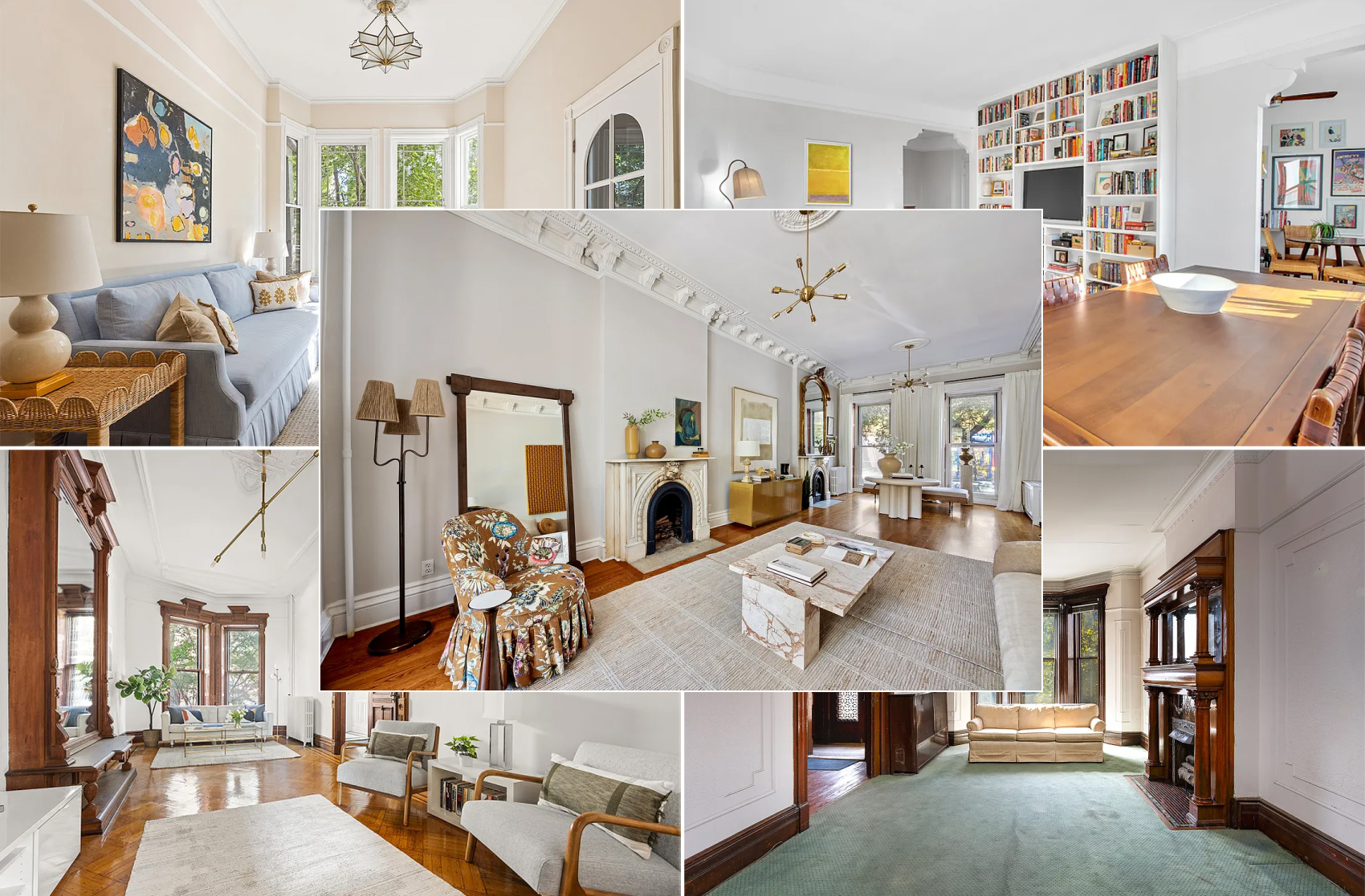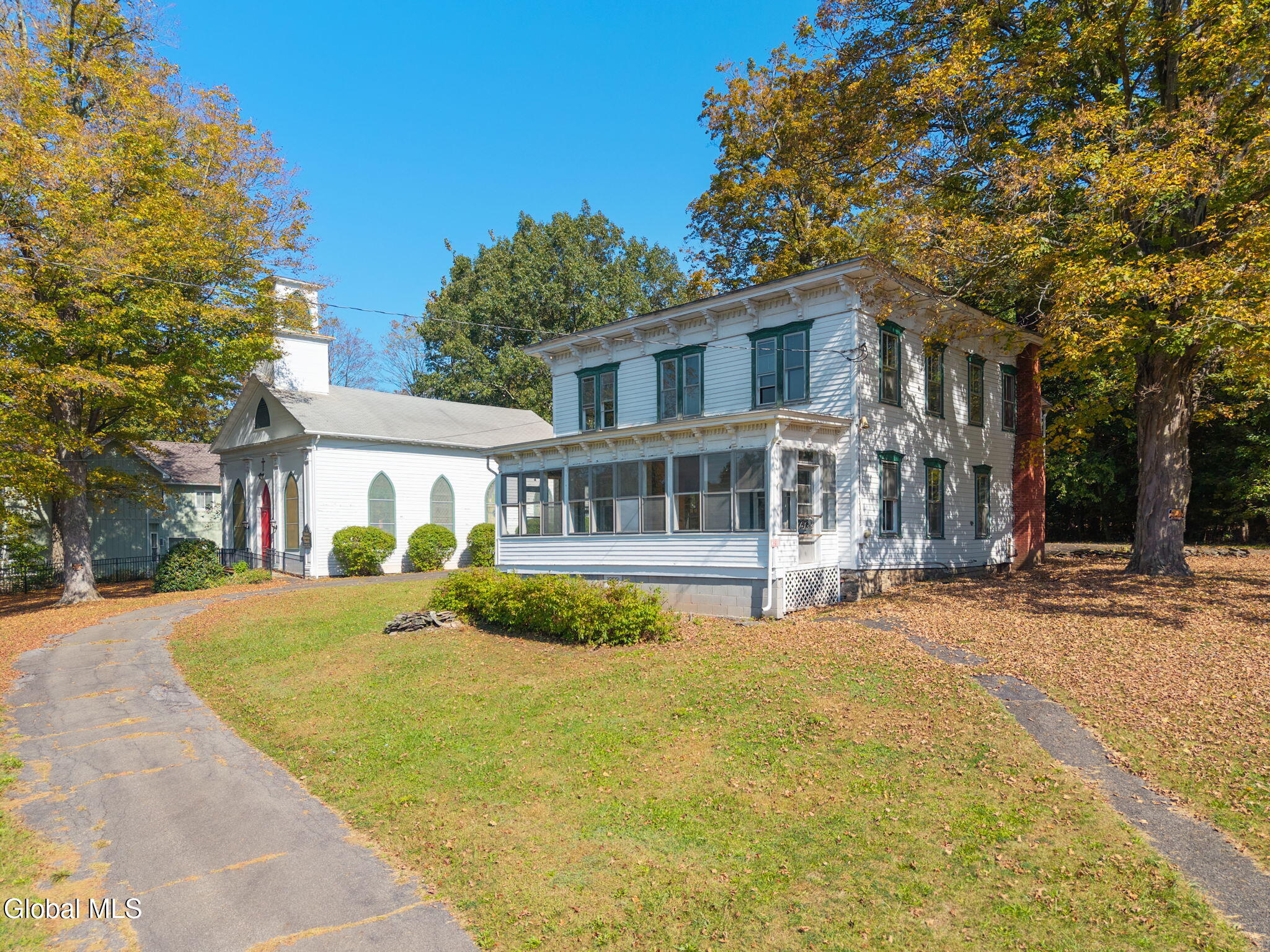Building of the Day: 100 Lefferts Place
Address: 100 Lefferts Place, between Grand and Classon, right side of photo Name: Private House Neighborhood: Clinton Hill Year Built: late 1880’s early 1890’s Architectural Style: Queen Anne Architects: probably FB Langston and/or Magnus Dahlander Landmarked: No, but in proposed Clinton Hill extension of the HD Why chosen: I’ve always liked big houses, perhaps because…


Address: 100 Lefferts Place, between Grand and Classon, right side of photo
Name: Private House
Neighborhood: Clinton Hill
Year Built: late 1880’s early 1890’s
Architectural Style: Queen Anne
Architects: probably FB Langston and/or Magnus Dahlander
Landmarked: No, but in proposed Clinton Hill extension of the HD
Why chosen: I’ve always liked big houses, perhaps because I grew up in one. These two row houses represent the best in grand brownstone living lots of space, gracious proportions and period detail. I couldn’t find a definitive date or listing of the architect, but I’m pretty sure they were designed by Dahlander and/or Langston. They designed separately, but often as a team, so much so that it’s sometimes hard to separate them stylistically. They designed very similar houses in Bedford-Stuyvesant, on Hancock Street, in Stuyvesant Heights on Bainbridge and Jefferson, and in Crown Heights on Dean. The richly carved Byzantine Leaf ornament on both houses is still in overall great shape, and I love the pediment framing the doorway with the cherub faces and the lion on # 100. It’s hard to see if the ornate carving above the door was never finished, or that it has worn down, or been resurfaced, but in any case, the remaining tracery is quite intriguing and beautiful. This is the better, more ornate house, and has a well-proportioned curved bay with arched windows framed by columns, and more fine Byzantine Leaf ornament. There is a K monogram right above the ground floor window, probably for the first owner of the house, whose name I haven’t discovered yet. I do know that by 1908, the house had belonged for several years to Judson Scott Quinby, a wealthy commission merchant, whose company Snecker & Quinby, had offices on Reade St. in Manhattan. He died in 1908. By 1926, the house, or at least an apartment in it, belonged to Anna McGrath. She was the sister of a young bank stenographer named Shirley McIntyre. One evening, as Miss McIntyre visited her sister to borrow some books, a 22 year old bank clerk named Walter B. Mayer followed her to the house. He worked with Shirley at Chase National Bank, and was in love with her, and wanted to marry her, but apparently she did not reciprocate his feelings. A confrontation occurred, and apparently Walter drew a gun and waved it around announcing that he was going to kill himself if she didn’t marry him. A struggle for the gun ensued, and Shirley fell dead to the floor. Walter then tried to shoot himself, and almost succeeded, but would recover to stand trial, and eventually be sentenced to only three years at Sing Sing. Most recently, the house was for sale, and was the topic of much discussion on Brownstoner.







New Guy, please send to montrosemorris@yahoo.com. I greatly appreciate it.
Yes, that national register report has great detail. Years built, by whom, and often some additional information on specific properties.
I can email them to you — I have pdf copies. How can I get them to you?
New Guy, I tried to find a copy of the National Register report, only to find that it has not been digitized by them yet. Do you know where I can get my hands, digitally or otherwise, on a copy?
This whole street has a fascinating history. It is part of the Clinton Hill South Historic District which is on the National Register of Historic Places. If you take a look at the thorough and detailed written nomination for inclusion on the Register, which was prepared in the mid 1980s, you will see the comment that 100-102 Lefferts Place are the grandest Romanesque Revival houses on the street and were designed by J.S. Frost in 1892; J.S. Frost lived in the Greek Revival house at 96 Lefferts Place and was the owner, architect and builder of the two houses at the eastern edge of his plot.
The nominating report is a treasure-trove of historical information. It is a crime that Lefferts Place (and the other streets in the District) is not protected by a New York City landmarks designation.
Did you know that the French Second Empire Villa at 161 Lefferts Place was once the home of Charles Dow, the renowned founding editor of the Wall Street Journal and creator of the Dow Jones Industrial Index and Dow Theory? It is highly likely that he did his greatest work while living in this house.
I think FB Langston did it but John S. Frost to the credit.. Langston and Hill worked together on a similar looking row of houses on MacDonough Street.
You narrowed it down for me – after that it was luck.
And yeah, I always think that I’ll spend 15 minutes looking something up and then spend 3 hours, usually coming away with a ton of interesting stuff, none of it relevant to the original question.
Thanks, WB’er. You must be better at wading through the Builder’s Guide than I am. I was at it for over an hour when I quit. Even with the search function. I shouldn’t be spending more than half an hour on each one of these, yet, somehow it always ends up being more. That doesn’t include the other research. Still looks like Langston and Dahlander, but it’s not like no one copied back then.
As to materials, I’m not sure, as both are painted. I’ll have to look very closely next time I’m over there. I’m thinking perhaps limestone.
The K is for Charles Foster Kane, obviously. Just ask Orson Welles.